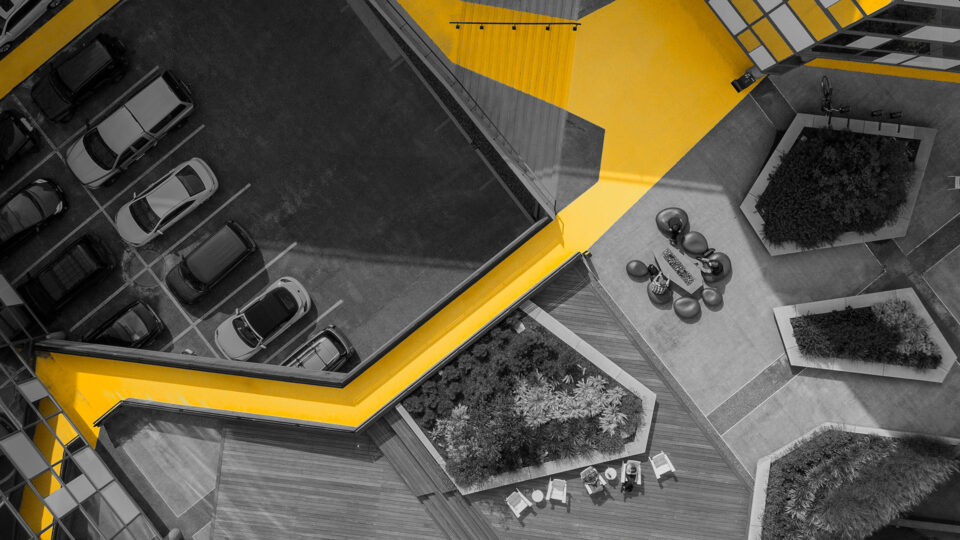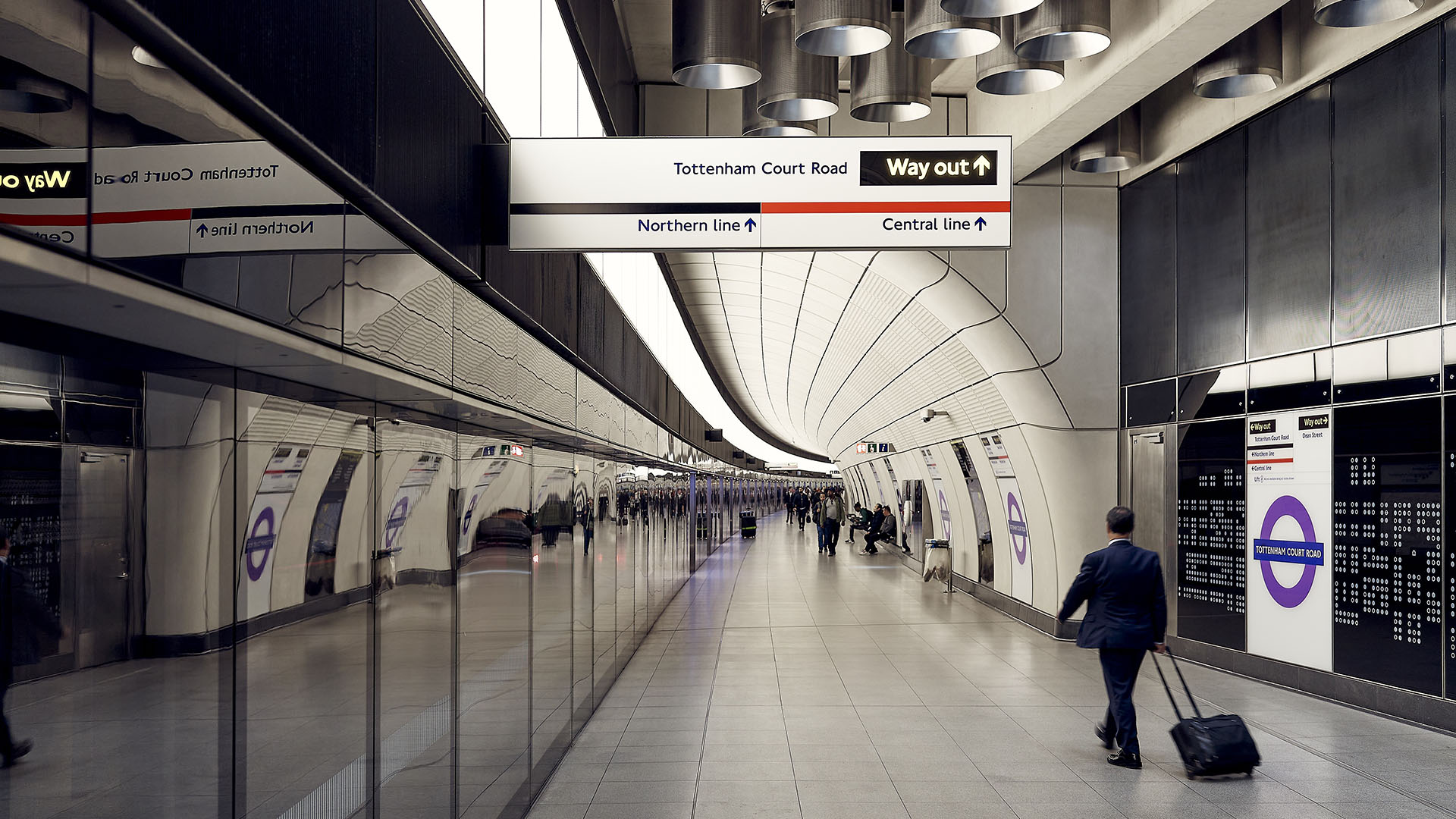Advancing Wayfinding and Experiential Graphics: EGD PPG’s 2025 Initiatives
Chairs of the Wayfinding and Experiential Graphics Professional Practice Group provide an update on the group’s 2025 initatives
The SEGD Wayfinding + Experiential Graphics Professional Practice Group (PPG) is dedicated to advancing best practices in wayfinding and experiential graphic design through collaboration and education. We achieve this by convening monthly to engage with our community, discuss topics of interest, and learn from one another.
This year, we have hosted two meetings. Sustainability emerged as a priority during our 2024 discussions, prompting us to invite Mike Johnson from Living Futures to share insights and tools for promoting environmentally responsible choices within our industry. His presentation highlighted the urgent need for sustainability, the interconnectedness of decision-making, and the importance of radical collaboration, transparency, and holistic approaches. Resources from this session are available in our community group on GlueUp.
Our second meeting of the year initiated our pursuit of 2025 goals. This year, the EGD PPG aims to establish specialized committees (or working groups) to spearhead key initiatives and develop tools and resources accessible to the SEGD community and beyond. The meeting facilitated robust discussions on three major initiatives: advancing inclusive and modern icon standards, creating industry-specific budgeting tools and guidelines, and developing an educational platform to enhance collaboration with EGD professionals. We are excited to share the progress and key takeaways from these discussions.
Collaboration with an EGD Partner
A dedicated breakout session focused on developing resources to educate project partners on best practices for engaging EGD professionals. Participants identified common pain points and broad topics relevant to the EGD community, including an introductory EGD 101, guidance on when to engage an EGD professional, scope alignment strategies, and process timelines. The consensus was that a useful outcome of this effort could take the form of a concise one-sheet and/or presentations to be shared with the community. Additionally, there is potential for this resource to be AIA-accredited.
Inclusive & Modern Icon Standards
The need for refreshed and reconsidered iconography is widely acknowledged, but the process for achieving this remains complex. The discussion centered on the formal procedures required to introduce new symbols, often involving an application process, associated fees, and oversight by the International Code Council (ICC). Participants explored the necessity of a gender-neutral symbol and reassessed the acceptability of the wheelchair icon. The conversation also addressed regional variations in symbol standards and the importance of aligning with discussions from the ADA committee.
To establish a clear path forward, the group proposed developing structured guidelines and potentially hosting “Iconathons” at SEGD chapters. These events would engage the community in the creation and refinement of symbols, particularly for those lacking standardized representations. Additional considerations included the role of typography in symbol design and the functionality of icons in digital applications. Moving forward, the group will define a starting point by cataloging existing and needed symbols, drafting a design brief outlining constraints and approval processes, and assembling a team of experts in graphic and icon development. Cultural and Indigenous language considerations will also be integral to the design process.
Budgeting Tool & Guidelines
Discussions revealed shared challenges in early EGD project phases, particularly in programming and coding requirements. Participants agreed that pre-design budgets should be framed as ranges rather than fixed costs. Code signage, often omitted from owners’ budgets yet included by general contractors for occupancy, was identified as an area requiring clearer communication to prevent duplication. Interior signage budgets tend to be more consistent, whereas exterior signage varies significantly based on project scale, regional differences, and design complexity—factors critical to accurate budgeting.
The group explored leveraging AI tools, including ChatGPT, for budget analysis, with promising results. Additional topics included phased budgeting and strategies for managing client expectations through Design-Bid versus Design-Build approaches. Trusted fabricators were noted as valuable resources for providing cost “gut checks” based on regional pricing and material considerations.
Through the collective efforts of this professional practice group, we strive to provide valuable tools and insights that empower SEGD members and elevate industry standards. In alignment with our recent discussions, the EGD PPG chairs are actively forming specialized committees to advance the initiatives outlined above. With the support of the broader SEGD community, we will continue our work and share updates on our progress.
We meet on the second Thursday of each month and always welcome new participants and fresh ideas. Join our community on GlueUp to stay informed about our initiatives. If you are interested in joining a committee or have suggestions for speakers or topics, please reach out to Amy Rees, Daniela Pilossof, or Sam Pease, Wayfinding & Experiential Graphics PPG Chairs, at wayfinding@segd.org.
People also viewed
-
SEGD Professional Practice Groups Are in Full Swing!

SEGD Professional Practice Groups Are in Full Swing!
-
Beyond ADA: Designing Accessible Wayfinding for the Visually Impaired

Beyond ADA: Designing Accessible Wayfinding for the Visually Impaired
-
Airport Wayfinding: Guiding Passengers and Expressing Identity

Airport Wayfinding: Guiding Passengers and Expressing Identity
